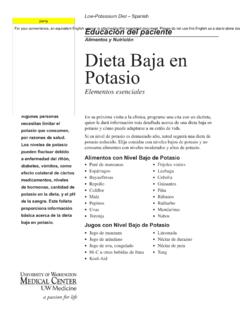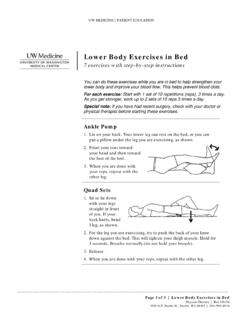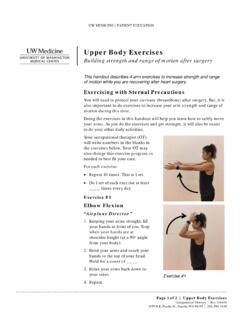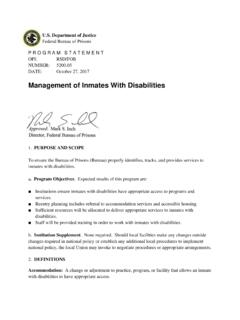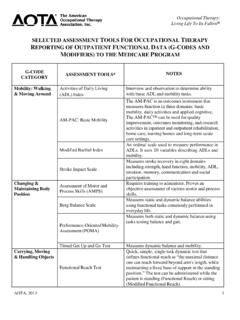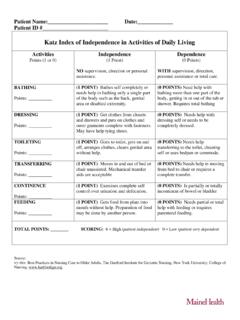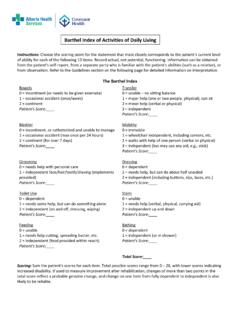Transcription of ADLs after getting pacemaker defibrillator - Health Online
1 UW MEDICINE | PATIENT EDUCATION. || activities of daily living after getting || a pacemaker or defibrillator Precautions and self-care This handout gives important safety guidelines to follow after getting a pacemaker or defibrillator . DRAFT. Why do I need to follow safety guidelines? You will need to protect your device after surgery. Until your care team tells you otherwise, follow the safety guidelines (precautions) in this handout. For the first 24 hours after your surgery: Wear a sling. after 24 hours, you may take it off. But, you may want to keep wearing your sling for comfort. If you choose to keep wearing the sling, take it off every 2 hours and stretch your elbow and shoulder.
2 For the first 30 days after your surgery: With the arm that is on the same side as your surgery (your surgical arm): Do not lift anything that weighs more than 10 to 15 pounds. (For example, most vacuum cleaners weigh about 10 pounds.) Do not wear a bra or any garment that requires you to reach behind you. Do not lift your elbow higher than your shoulder. Do not put your arm behind your back. Do not make any sudden movements with your surgical arm. activities Standing up from sitting: Do not push off with the arm that is Ask for help when reaching for on the same side as your surgery. anything above shoulder height.
3 Putting on a shirt, blouse, jacket, or coat: Slide your surgical arm into the sleeve. With your other arm, gently slide the garment over your shoulder and around your back. Slide your other arm into the other sleeve. _____. Page 1 of 2 | activities of daily living after getting a pacemaker or defibrillator Occupational Therapy | Box 356154. 1959 Pacific St., Seattle, WA 98195 | Taking off a shirt, blouse, jacket, or coat: Carefully remove the sleeve from your non-surgical arm. Using your non-surgical hand: Gather the garment onto the side of your surgery. Pull the shirt off your surgical arm. Putting on your pants, shorts or underwear: Sit in a chair.
4 Lift 1 leg at a time and slip it into a pant leg until your foot is clear of the garment. With both feet firmly on the ground, hold onto your pants and stand up. DRAFT. Pull your pants over your hips. Make sure your surgical arm does not go behind your back. Taking off your pants, shorts or underwear: Use your non-surgical arm to reach behind your back, if needed, to pull down your pants. Putting on your shoes and socks: Sit in a chair. Lift 1 leg and place that ankle on top of the other knee. With your hands, slide the sock or shoe over your toes. Make sure your surgical arm does not bend more than 90 degrees (a right angle).
5 Gently pull the sock or shoe over your foot. Repeat for the other foot. Putting on a bra: Please talk with your occupational therapist about wearing a bra. Bathing: For 1 week: Do not get your incision wet. For 6 weeks (or until your doctor says it is OK): Do not take a bath or do any other water activities that will soak your incision. When you shower: Wash your incision, gently massage soap on the area with your fingers or a washcloth. Do not scrub your skin or wound Questions? Use your non-surgical arm to wash, rinse, and dry areas that are hard to reach, such as your head, backside, and legs. Your questions are important.
6 Call your doctor or healthcare Other activities : provider if you have questions Follow your doctor's instructions about driving and sexual activity. or concerns. Check with your doctor before you do any activities that use your arms. Occupational Therapy: Some of these activities are swimming, golfing, playing tennis, shooting a gun, wrestling, playing football, vacuuming, and sweeping. _____. University of Washington Medical Center Published PFES: 11/2017. Page 2 of 2 | activities of daily living after getting a pacemaker or defibrillator Clinician Review: 11/2017 Occupational Therapy | Box 356154. Reprints on Health Online : 1959 Pacific St.
7 , Seattle, WA 98195 |






